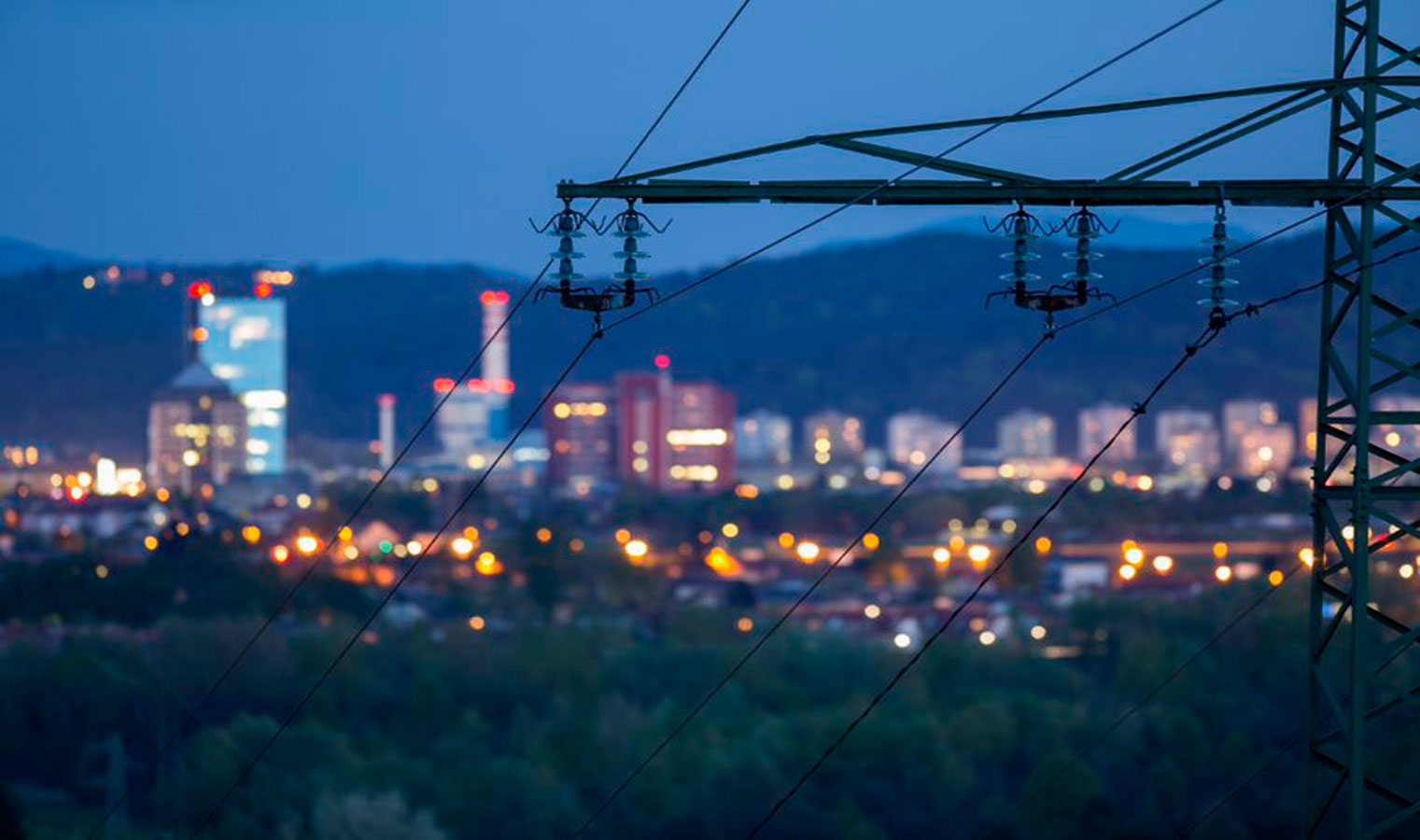For 40 years, we've been driving our country's economic and social progress. Four decades shaping Spain.
These are installations that act as nodes in the transmission grid, where several electrical circuits converge, and where the necessary elements for their operation and protection are located.
AIS Technology
Air-insulated substations (AIS) or conventional substations, usually installed outdoors, are made up of different elements: metering, no-load switching and switching and/or load breaking elements that allow short-circuits or faults to be cleared.
Since these sub-stations connect with generation and/or distribution grids, they are often equipped with power transformation elements and, similarly, with voltage control elements such as reactances and/or capacitors.
These installations are exposed to weather conditions. Therefore, they require protection against them and for the safety of people transiting through them with upper and lower grounding grids capable of limiting step and touch voltages. These measures are applied according to current legislation.
Additionally, there is a need for space to ensure the isolation of their elements.
The land where they are located must have minimal slopes and a suitable levelled platform with appropriate drainage to prevent flooding during torrential rains or rising groundwater levels.
To manage these installations, they must be equipped with huts or buildings housing the protection, control, and communication elements connecting them with other sub-stations or the Electricity Control Centre.
They also have auxiliary services that power each of the sub-station's pieces of equipment, designed starting from medium- or low-voltage AC grids transformed to DC to ensure their operation and bring them to a safe position in case of an incident.
As a backup, they are equipped with generators that support essential systems in case of AC power loss from the grids.
To ensure their security, sub-stations are entirely fenced and equipped with lighting systems and alarms for fires and other incidents, informing the control centre.
GIS Technology
Sub-stations with GIS (Gas Insulated Sub-station) technology are installations where the components through which current flows are encapsulated in pressurised gas, unlike conventional sub-stations where the insulating element is air at atmospheric pressure.
The gas serves as an insulating and breaking medium. On the other hand, when we talk about SF6 gas (sulfur hexafluoride), widely used in these installations to date, it has advantages as an insulator compared to air, allowing for reduced distances between elements and thus smaller installation dimensions.
An encapsulated installation in an aluminium enclosure avoids direct contact of active, high-voltage parts with the atmosphere, reducing deterioration and maintenance needs while increasing reliability and the installation's lifespan.
The design of GIS sub-stations is modular, which enables a kind of ‘Meccano’ approach to achieve the desired configuration. Additionally, each phase can be encapsulated independently (single-phase) or all three together (three-phase).
Grounding GIS sub-stations is done in compliance with the relevant regulations, addressing the different functions from the perspective of both personal and installation safety.
These installations are usually built in locations with severe environmental conditions or where the available space is limited.
GIS sub-stations can be outdoor or indoor. If outdoor, they require special surface protections to avoid corrosion or issues that might cause accelerated material deterioration that prevents their designed life span from being fulfilled. It is recommended to install them indoors.
Like AIS, GIS sub-stations require auxiliary services, a protection and control system for optimal operation, and a secure and reliable communication network for proper connection to the remote operations centre (Electricity Control Centre).
Additionally, the building housing the GIS installation and other services is equipped with security devices, lighting, and other standard services for proper management and operation.












